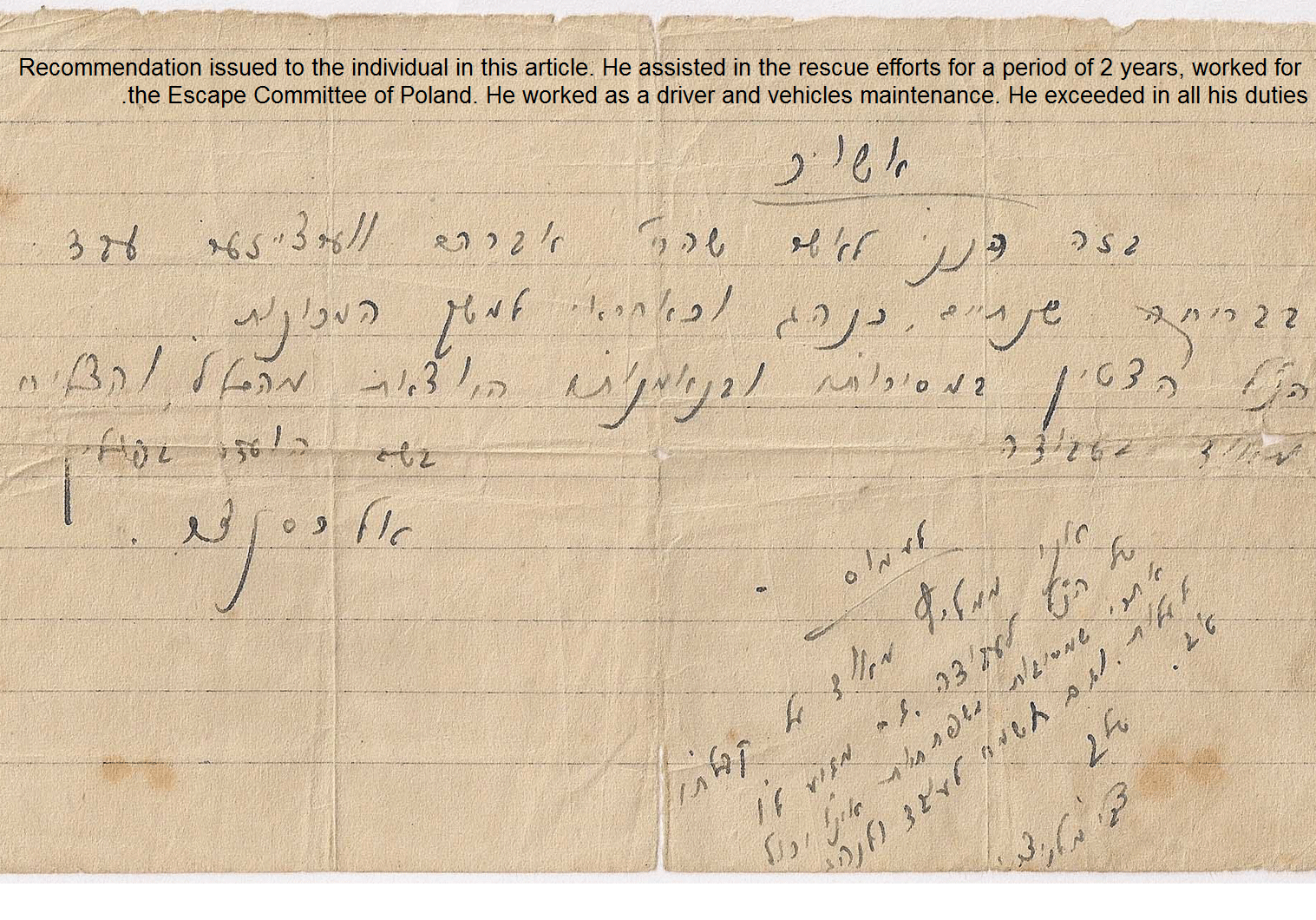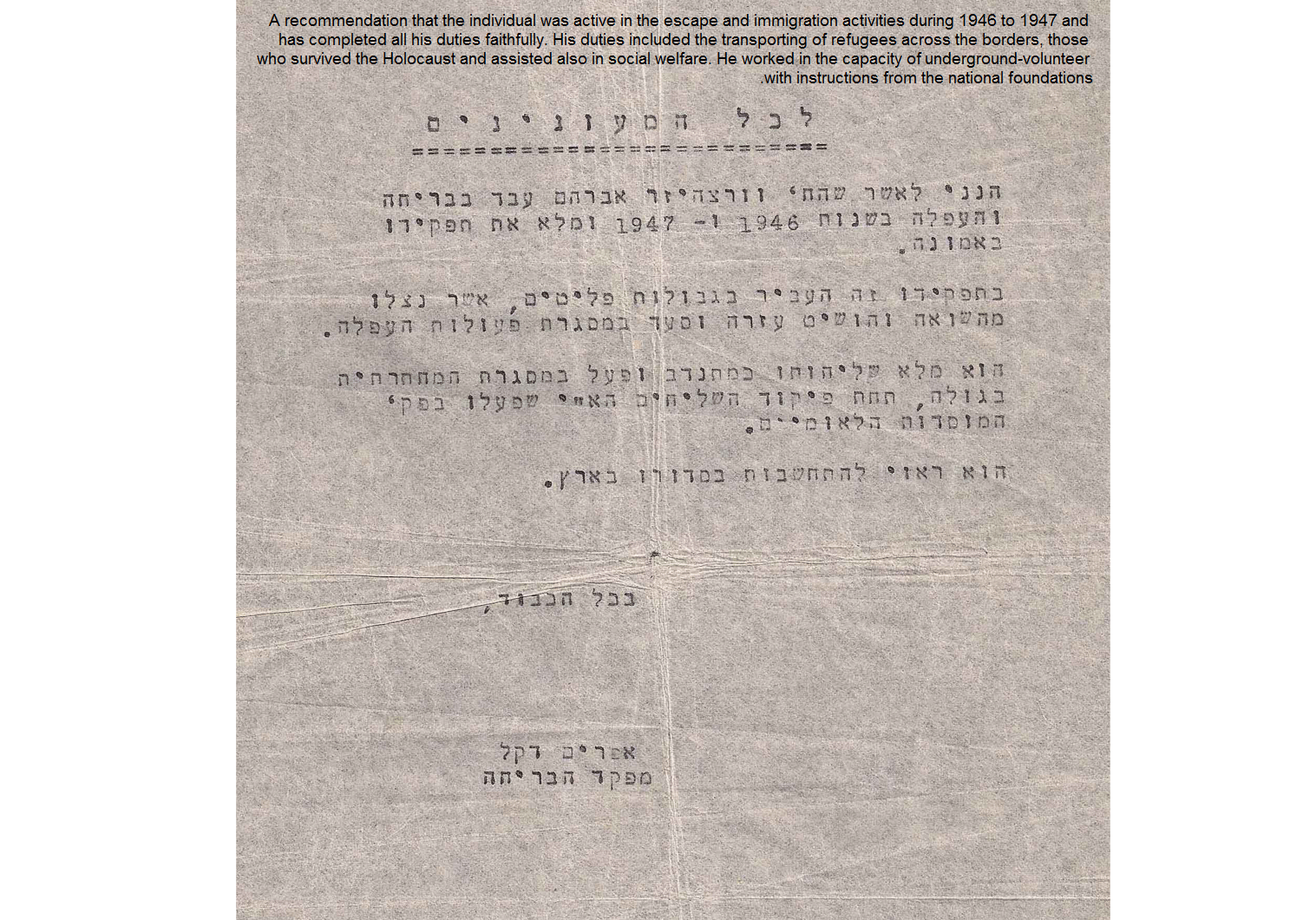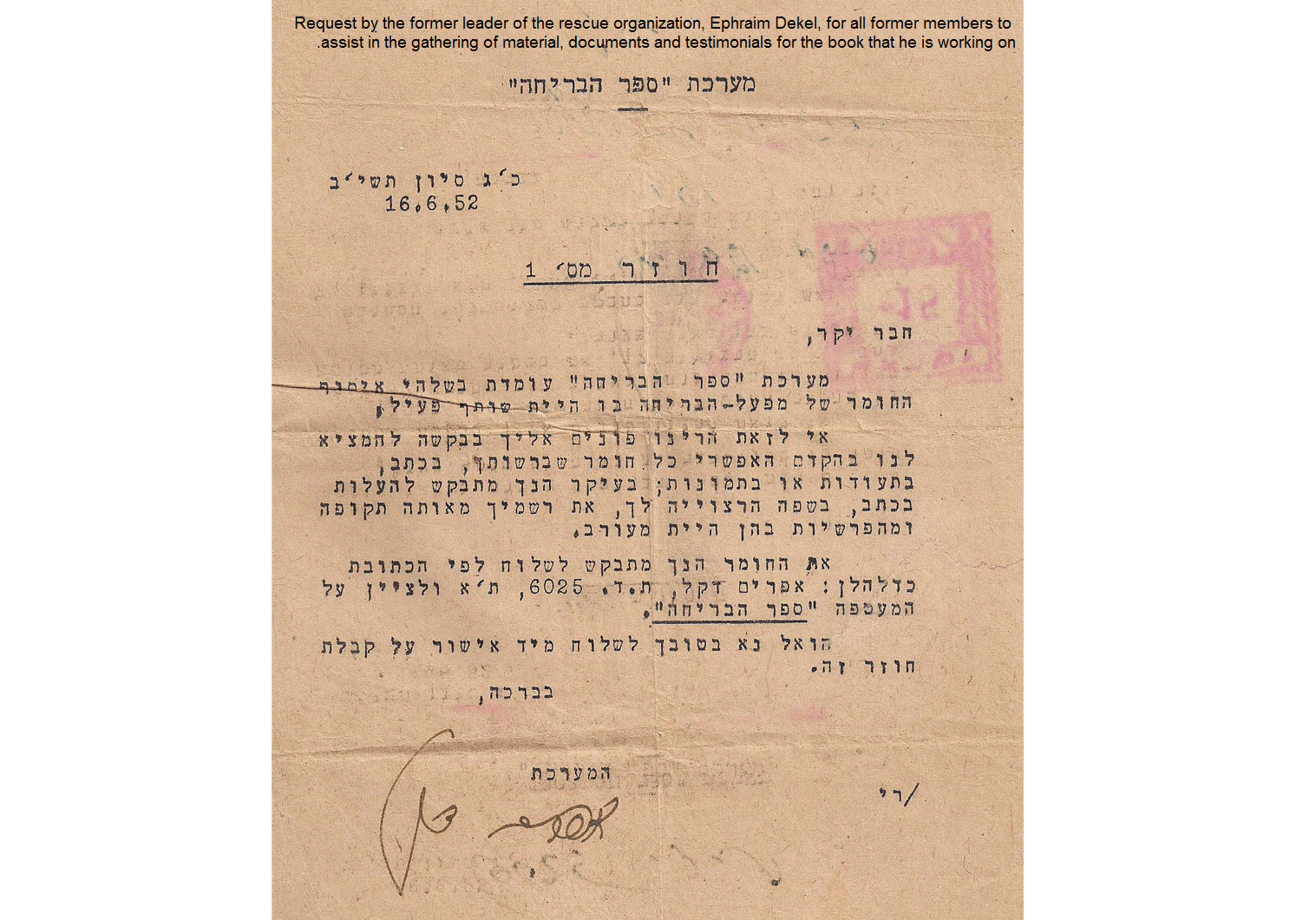Post-war “ESCAPE” organization in Europe
Habricha member’s passports & documents used in 1948.
This is part of World War Two that is not known to many outside of Israel. Like most nations, each country decides to focus on the section of history that glorifies or enhances its role in the Great War: The contribution of its people, its soldiers, to the war effort which culminated in the victory in May and September of 1945.
In Israel, WW2 is remembered mainly with the mass extermination of over 6 million of our people in six years of war: mass shootings into dug up pits by German death-squads known as the Einsatzgruppen which were active in the early stages of Operation Barbarossa, “aktions” from the ghettos (roundups & deportations to the camps), public hangings and the gassing at the death camps scattered throughout occupied Poland. Besides the teachings of the Holocaust, the war is also remembered by hundreds of personal testimonies by Jewish partisans that fought throughout Europe and the Jewish Brigade soldiers that fought Rommel and his North African army in Algeria, Morocco & Tunisia and then the landing in Italy moving forward into Germany ending with these forces liberating some of the concentration camps.
Another part of the war that is often taught at schools and commemorated in Holocaust museums in Israel, for example Yad Vashem, Yad Moredechai, Beit Terezin and more, is the post-war Jewish smuggling of survivors from Europe into British Palestine. These actions, of locating the survivors of the camps, ghettos, those who went into hiding by using false identity papers, were conducted with the aid of Jewish agents sent from the Mandate to liberated Europe and former partisans and Jewish Brigade soldiers already placed in Italy and Germany. All these efforts where for one purpose: assisting the handful of survivors come out of the ashes and lead them into safety, into their promised land, into what is today the State of Israel.
The smuggling into British Palestine is known as the HABRICHA (הבריחה) meaning “The Escape”, a term that indicated the escape from post-war Europe.
Already at the end of 1944, in liberated eastern Poland and western Ukraine, Jewish partisans began to assist the Jews in hiding and the odd few who were found in labor camps. Food and shelter was offered to the weak and sick. These were the seeds to what would later become a national movement that would be termed in the history books as the HABRICHA.
After the liberation of Poland, towards the middle of 1945, Jewish agents were sent from Palestine to Poland and together with charity organizations and foreign funding started the work of locating the survivors of the camps and ghettos. Mass gatherings into community shelters where conducted and at the same time the preparation of receiving close to 150,000 former Polish Jews from the USSR who found refuge in the east before and during the German invasion of Russia in 1941. These Jews return back into Poland was seen as “repatriation”, and were allowed by the Soviets to leave west. So 1945 marked the return of thousands of
Jews back to their former homes. But the Jewish Agency for Palestine decided that the aim was to have
these survivors leave Europe, which clearly was not the natural place for them to be, it was not the home they thought it was: 800 years of history was wiped out.
During that year, in nearly every major large city in Poland, Germany, Czechoslovakia, Hungary, Romanian, France, Italy, Yugoslavia and more, Jewish welfare centers, working together with Escape members (HABRICHA), where operating in locating and arranging the swift travel of survivors west, into liberated Germany and from there south through Italy to be loaded into make-shift boats, and to be smuggled via sea
to the shores of Palestine.
1946 marked the peak of these operations when thousands began fleeing west in panic, trying to escape Poland into Germany or Czechoslovakia: In 1945 at Krakow and 1946 in Kielce, the local Christian population was furious with Jews returning back home and claiming back their belongings and property, this led to public outrage and culminated with mass hunting down and killing of the returning Jews (from the USSR). If there was any notion in the survivor’s minds that Poland would welcome them back, they were wrong: this was a clear reminder that the old aged anti-Semitism was not gone and still existed, even in post-war Poland. Following these major attacks, and scores of others in smaller Polish communities, thousands of Jews began to flee to the western and southern borders of the country. Here the Escape members assisted as much as they could with food, shelter, fake papers and collective visas to cross the border into Czechoslovakia at the Polish border crossing of Bogumin; or into Berlin via the Stettin border crossing at the west. 1946 alone saw close to 130,000 Polish Jews leave Poland, majority crossing into Czechoslovakia.
The escapees and the rescuers are grateful to the authorities in Prague, which where practically the only ones that allowed such mass transits via their country, with the government sanctioning these events with official decrees (for example by the Ministry for Social Affairs –Repatriation Department dating from July 31st 1946 & January 24th 1947), and by supplying police protection, shelter and food to the refugees pouring into the cities. All this was permitted as long as they would transit out after a very brief period of time (being granted transit visas only). The refugees were given make-shift ID papers, fake passports and fake movement permits that allowed them to cross nearly every border, leading them at the end into DP camps in Germany. There, once in the safety of allied controlled Germany they would receive food and aid from international organizations (for example by the American Joint Distribution Committee or UNRRA), more papers, guidance and preparations for leaving to Palestine, mainly illegally via sea. By then the Mandate was in a tight British naval blockade that did not want or permitted any Jewish refugee to enter; so thus the smuggling of thousands of Jews began in 1945 ending after the formation of the State of Israel in 1948 (those that were caught were sent to internment camps in Cyprus or the Atlit camp close to Haifa).
The passport here, together with various documents, belonged to a young Jewish couple that survived the war and ended up in liberated Poland of 1945. This couple volunteered and entered the Escape Committee
of Poland in 1946, and actively aiding in the transport of survivors to the Czech border, in the south.
Abram Wercajzer, born on May 25th 1922 at Warsaw was a driver, obtaining his driver’s license around 1946 at Wroclaw (added image). He was active from 1946 to 1948, the year Israel was founded and also the time he got married to Rywka from Lodz. They both were issued Polish passports at Warsaw, and used them only once to cross the border into Czechoslovakia via the border crossing at Bohumín – Nádraží (Bogumin in Poland). The interesting and important part of this passport is the single Czech visa issued at Warsaw on June 30th: at the top-left corner of the visa it is hand-added by the consul himself that the two were members of the “Rescue Committee” (VAAD HAHATZALA), a section of the Escape Organization (HABRICHA). Because the authorities in Prague were turning a blind eye to these operations at their borders and also sanctioning them as well, the consul was able to assist them in leaving Poland by issuing them not a transit visa (issued to those transiting the country west) but an ENTRY visa for a two week stay in the country (the rescue committee was based in Prague). This is the only visa of its type that I have located to date. By 1948 the Polish government was tightening its borders (anyone belonging to these smuggling operations that was caught was imprisoned), the Iron Curtain was closing down on Europe so it was not possible anymore to flee via the borders, all make-shift “border crossings” were shutting down and beefed-up border patrols on the Polish side, so the only way out was with an exit visa, which was issued on June 30th.
The next set of papers that the couple was issued where forged DP camp ID papers, inside the camp at Kassel Möncheberg without a specific immigration date into Israel in 1948, an “open permit”, and also local governmental confirmation of their status as ex-concentration camp inmates (Rywka as being liberated from Auschwitz and Ravensbrück). In various post-war testimonial sources all escapees from the former USSR arriving into Germany via Poland were handed forged ID papers to assist them in their temporary stay in occupied Germany because the allies did not accept this illegal immigration from Poland into their zones of occupation; they only accepted repatriation of former civilians back to their original homes.
Abram and Rywka arrived into Israel during 1949. He would use warm recommendations from his former colleagues and superiors at the Escape Committee in order to find a job (indicating that he fulfilled his duties courageously and with great effort in the Polish rescue efforts from 1946 to 1948 as a driver and fleet of vehicles maintenance), which he did: working as a fireman up to the late 1970’s. Added images here are of his passport, his wife’s certificate asserting she was an inmate at former concentrations camps and their forged identity cards from Kassel Möncheberg DP camp for preparation to immigrate to Israel.
Thanks to the courageous efforts of many, close to 250,000 survivors found their way into the State of Israel by 1948 where they managed to rebuild a home and a family. In 1958, the head of this organization, Ephraim Dekel, published a two volume book on its post-war activities in Europe (added cover image as well).
Thank you for reading “Our Passports”.


















